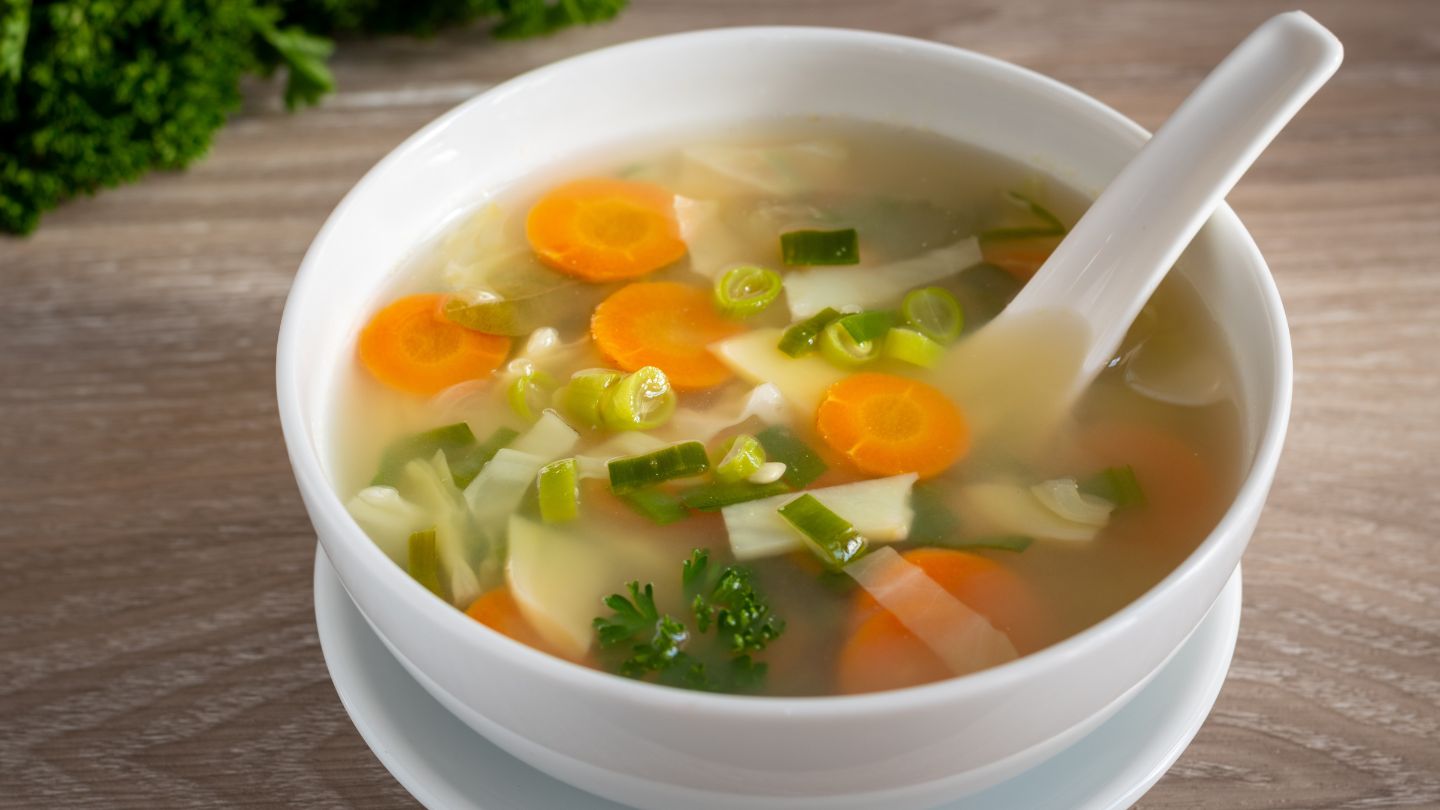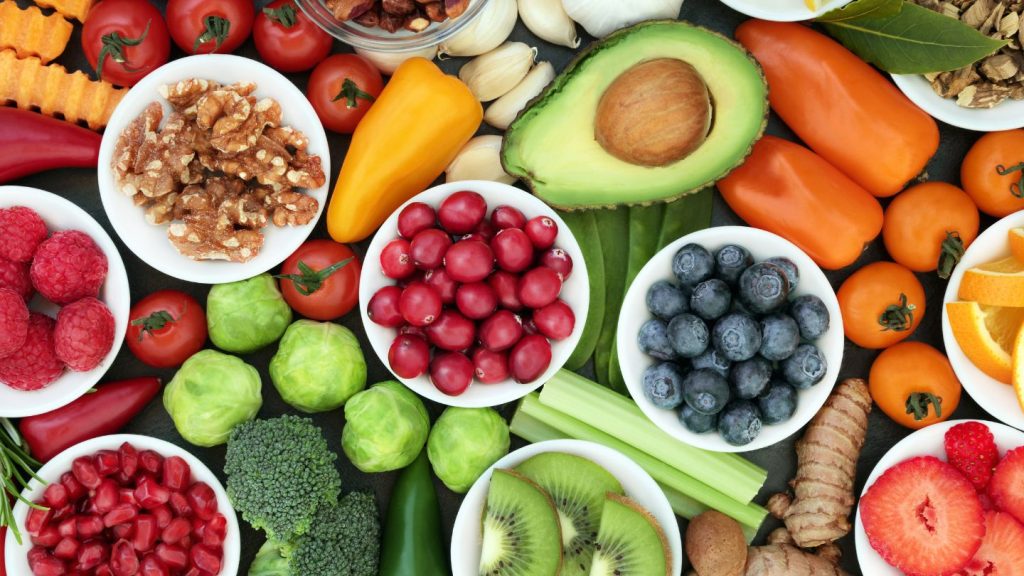
Best Duodenal Switch Post-Op Diet Guidelines for Optimal Recovery
Did you just have a duodenal switch? You need clear, actionable diet guidelines, specifically the “duodenal switch post-op diet guidelines,” to ensure proper healing. This guide will walk you through what to eat at each stage of your recovery—from clear liquids to solid foods. You’ll find practical tips to stay hydrated, avoid complications, and make your recovery smoother.
Key Takeaways
- The immediate post-surgery diet consists of a seven-day clear liquid regimen, essential for hydration and minimizing complications.
- Progression from clear liquids to pureed foods and soft foods should be approached gradually, with an emphasis on proper portion sizes and chewing habits to prevent digestive issues.
- Long-term dietary habits post-surgery should prioritize high-protein foods and adequate hydration while avoiding high-sugar and high-fat items to maintain digestive health and prevent complications.
Immediate Post-Surgery Diet
The initial stage of recovery following a duodenal switch operation involves adhering to a post-surgery diet that aids in proper healing and lessens the risk of complications. During this phase, patients must maintain hydration and support their recovery through a clear, liquid diet that excludes any sugary substances.
It is crucial for patients to stay hydrated by consuming non-caloric fluids. They should drink them slowly throughout the day, aiming for 48-64 ounces each day. To facilitate healing and decrease the likelihood of post-operative issues, it’s recommended that patients consume six to eight small meals consisting solely of clear liquids daily.
Clear Liquid Diet
Following a duodenal switch surgery, individuals are advised to adhere to a clear liquid diet for an initial period of seven days as part of the healing process. During this time, it is essential that patients maintain hydration by consuming 48-64 ounces of clear liquids daily. To avoid discomfort, they should take minimal sips and gradually increase their intake based on personal tolerance.
Acceptable liquids include broth, unsweetened electrolyte beverages, herbal teas, and sugar-free gelatin. Patients must strictly avoid any liquids containing solids, carbonation, or high sugar content, as these can cause bloating or digestive distress.
During this phase, six to eight small servings of clear liquids should be frequent throughout the day. Sticking to this schedule helps reduce post-operative complications while promoting steady healing. This foundational phase allows for a smoother transition to subsequent dietary stages.
Transition to Full Liquids
Following the initial phase of consuming clear liquids, individuals move on to a diet comprised of fuller, thicker liquids. This stage incorporates more substantial fluids, such as protein shakes, that assist in conditioning the digestive system for handling increasingly sophisticated forms of nourishment. The starting portion size is recommended at one tablespoon and may be escalated to two tablespoons contingent upon individual tolerance levels. During this period, it’s important to steer clear of heavy and creamy substances like gravies and sauces.
This progression toward full liquid intake is critical in preparing the organism for an eventual introduction to a broader spectrum and wider varieties of foods during subsequent stages of recovery. Should any new dense liquids introduce sensations like nausea or induce physical discomfort, their ingestion should promptly be discontinued.
Progression to Pureed Foods

After two weeks following their surgery, patients may begin to incorporate foods that have been pureed into their meals. From the second to the fourth week after surgery, there is an emphasis on adding both pureed and soft foods to their diet, with attention paid to sustaining adequate nutrition and recognizing any intolerances to certain foods.
Starting Pureed Foods
During the stage where pureed foods are advised, it is recommended to consume items such as low-fat cottage cheese and vegetables that have been pureed. Should lactose intolerance develop post-surgery, patients should opt for non-fat alternatives to dairy products. It’s important at this time to steer clear of any breads or meats that do not break down easily when chewed. Introducing each food individually can assist in pinpointing any allergies or intolerances.
It is beneficial for patients to eat a minimum of six small meals throughout the day in order to aid their recovery and sustain energy levels. Beginning with modest amounts and incrementally increasing them as they become more tolerable will facilitate an easier transition toward incorporating a wider array of foods into the diet.
Maintaining Pureed Consistency
Foods that have been pureed must attain a texture that is akin to either a thick fluid or a smooth paste without any chunks of solid material within. When sampling new foods for the first time, it’s crucial to consume very tiny portions and thoroughly chew each bite. As for solid food intake, servings should be kept to 1/4 cup increments. When drinking liquids, amounts may extend up to 1/2 cup.
Each sitting for eating should span approximately half an hour. Adhering to no more than two bites every twenty minutes is advisable while exploring new edibles. Adhering strictly to this methodical pace assists in recognizing potential dietary sensitivities and promotes an easier progression toward subsequent nutritional stages.
Soft Foods Introduction

Patients may begin to eat soft foods after they have spent several weeks on a diet of pureed foods, provided they have received the go-ahead from their healthcare provider.
The transition to solid foods post-surgery can take anywhere between one and two months as the body adapts. The time required for this adjustment differs among individuals.
Introducing Soft Solids
Introducing soft solids into the diet can be done effectively by opting for gentle options such as scrambled eggs and ripe fresh fruit. It’s advisable to keep portions of soft foods within a one-third to one-half cup range per meal. When eating these soft foods, it is crucial to begin with small morsels and ensure they are chewed well to aid in digestion.
The preparation of soft foods demands that they be made into small, tender pieces that can be chewed with ease. This meticulous approach serves to reduce any potential difficulties or complications related to digestion.
Chewing and Eating Habits
To avert digestive issues and promote a more seamless recovery following duodenal switch surgery, it’s crucial to meticulously masticate your food. It is advisable to chew soft foods until they attain a texture similar to that of applesauce, which aids in the digestion process.
The pace at which you eat is equally important because eating slowly can greatly diminish the likelihood of experiencing nausea or vomiting after the procedure. Ingestion of meals too hastily or in large quantities may induce discomfort or nausea while digesting. Hence, taking small bites and thoroughly chewing them is essential.
It’s beneficial to refrain from reclining for approximately 30-60 minutes following eating, as this practice can help circumvent feelings of nausea.
Long-Term Eating Habits

It is crucial to develop new eating habits that focus on high-protein foods and proper hydration for lasting health benefits and effective weight control after surgery. The main goal of a post-bariatric surgery diet is to support healing and help patients adopt these new dietary practices.
High Protein Foods
Protein is the most important nutrient for duodenal switch patients, and it is crucial for recovery and maintaining muscle mass post-surgery. A daily intake of 90-120 grams of protein is typically recommended for optimal healing. This can be achieved through high-protein foods such as:
- Eggs
- Meats (lean poultry, fish, seafood)
- Dairy products (yogurt, cottage cheese, low-fat cheese)
- Plant-based alternatives (tofu, soy milk, legumes)
To meet daily protein goals, each meal should consist of at least three ounces of protein-rich foods. Patients may also incorporate protein shakes or supplements that contain more than 20 grams of protein per serving if needed. Healthcare providers can guide patients in selecting the best options based on individual nutritional needs.
Foods to Avoid
Patients should steer clear of high-calorie foods that trigger negative reactions. Avoiding high-sugar foods can significantly lessen the risk of dumping syndrome after surgery. Keeping fat content under 10 grams per serving is crucial to prevent dumping syndrome.
Fatty and sugary foods can exacerbate diarrhea symptoms following a duodenal switch procedure. Diarrhea may occur due to fatty acids passing into the colon post-surgery. Avoid specific foods to maintain optimal digestive health.
Hydration and Fluid Intake
It is essential to maintain a daily fluid intake of 1 to 1.5 liters during the first two weeks following surgery. Prioritizing calorie-free beverages will assist in keeping hydrated after the operation.
To avoid any discomfort, one should refrain from consuming liquids for a period of 30 minutes before and after eating meals. Adhering to this regimen ensures that hydration levels are managed without disrupting digestion.
Nutritional Supplements
Vitamin and mineral supplements are critical to take daily after duodenal switch surgery to prevent nutrient deficiencies.
The necessary supplements include:
- Daily multivitamins
- Calcium Citrate
- Vitamin D
- Additional nutrients like B12 and iron
These are essential for duodenal switch patients.
Daily Multivitamin
Comprehensive multivitamins are critical for addressing deficiencies post-surgery. Patients should start taking multivitamins two weeks post-op.
During the first three months post-surgery, take two chewable multivitamin tablets daily, then switch to one tablet daily for life.
Calcium and Vitamin D
Following duodenal switch surgery, individuals should consume between 1,800 and 2,400 mg of calcium per day. Calcium citrate is the recommended type of calcium for those who have undergone a duodenal switch procedure. To satisfy the needs after surgery, daily Vitamin D3 supplementation should be approximately 3,000 IU.
It’s important to combine vitamin D with your intake of calcium supplements in order to improve absorption. Both calcium and vitamin D play critical roles as essential supplements vital for preserving bone health post-duodenal switch.
Additional Supplements
After undergoing a duodenal switch surgery, it is advised to consume 500 mg of vitamin B12 every day. For the best absorption, this vitamin can be taken sublingually or delivered via injections.
Ensuring adequate intake of Vitamin B12 is crucial for maintaining good health following a duodenal switch procedure, as it helps in avoiding potential deficiencies.
Managing Common Post-Surgery Issues
Managing common post-surgery issues is crucial for a smooth recovery process. Many patients experience nausea and vomiting after surgery; effective strategies to avoid dumping syndrome include reducing sugar and fat intake and eating slowly.
Dumping Syndrome Prevention
To prevent dumping syndrome, patients who have undergone a duodenal switch should stick to their prescribed diet, which limits high-sugar foods. It is also essential for these individuals to eat at a slow pace and be mindful of serving sizes in order to avoid the onset of this condition.
Handling Nausea and Vomiting
Persistent vomiting after surgery may indicate strain on the newly formed stomach, leading to inflammation or irritation along the staple line. If vomiting occurs, it is advised to immediately switch back to a clear liquid diet to prevent further discomfort. Patients should prioritize slow sips of clear, sugar-free fluids and consult their healthcare provider if symptoms persist.
Frequent nausea may be a sign of food intolerance or eating too quickly. Patients should eat in a relaxed setting, chew thoroughly, and avoid drinking fluids with meals. If nausea does not subside, healthcare professionals can provide medications or dietary modifications to help manage symptoms.
Diarrhea Management
Following duodenal switch surgery, some patients may experience diarrhea due to the passage of unabsorbed fats into the colon. This reaction can be triggered by:
- Excessive dietary fat intake
- Sugar alcohols (such as sorbitol or maltitol)
- Lactose intolerance
To minimize these symptoms, it is recommended that patients follow a structured meal plan emphasizing lean proteins and fiber-rich vegetables. Healthcare providers may also suggest probiotic supplements, which support gut health and digestion. Patients should consult their dietitian or surgeon to determine the best probiotic options and any additional dietary adjustments needed.
Alcohol and Weight Loss Surgery
Patients should be cautious and moderate with their alcohol consumption following weight loss surgery, as it is absorbed more quickly into the system. It’s advisable to eat before consuming alcohol, steer clear of mixers high in sugar, and remain aware of the potential for hypoglycemia.
Read More: How Alcohol Affects Your Weight Loss
Alcohol Absorption Changes
After duodenal switch surgery, alcohol is absorbed more rapidly and can lead to higher blood alcohol levels than before surgery. This occurs because the body produces less of the enzyme responsible for breaking down alcohol, causing individuals to feel intoxicated after consuming even small amounts.
Additionally, bariatric surgery alters how alcohol passes through the digestive system, potentially increasing the risk of hypoglycemia (low blood sugar). Patients should approach alcohol consumption cautiously and discuss safe drinking habits with their healthcare team to avoid potential complications.
Safe Drinking Practices
Patients should be mindful of the increased effects of alcohol post-surgery. To minimize risks:
- Eat a protein-rich meal before consuming alcohol
- Avoid sugary mixers to prevent blood sugar spikes
- Drink slowly and monitor alcohol tolerance
- Be aware of hypoglycemia symptoms, such as dizziness or fatigue
For those who choose to consume alcohol after surgery, it is essential to do so under medical guidance to ensure safety and prevent adverse effects.
Conclusion
At Wellstar Comprehensive Bariatric Services, our experienced weight loss surgeon in East Cobb, Cobb County, Marietta, or Austell offers comprehensive support throughout your weight loss journey. From pre-surgery consultations to post-operative care, we focus on personalized treatment plans to ensure successful long-term weight management.
At Wellstar Comprehensive Bariatric Services, we are proud to provide gallbladder surgery in Cobb County, including Marietta, Smyrna, Austell, LaGrange, and West GA, as one of our specialized offerings. Our dedicated team of bariatric specialists, dietitians, and surgeons is committed to providing the necessary resources for ongoing support and a healthy, sustainable lifestyle after surgery. Ready to transform your health? Contact us today!
Frequently Asked Questions
1. How can I tell if I’m eating too fast after surgery?
Eating too quickly can cause discomfort, nausea, or vomiting. Signs include feeling overly full after just a few bites, stomach cramping, or a tight sensation in the chest. To avoid this, take small bites, chew thoroughly, and wait at least 30 seconds between each bite.
2. What should I do if I don’t feel hungry but need to meet my protein goals?
Lack of hunger is common after surgery. Try consuming small, protein-rich meals every few hours rather than waiting for hunger cues. Liquid protein supplements or soft, high-protein foods can help meet daily protein needs without causing discomfort.
3. How long does it take to adjust to a normal eating routine after a duodenal switch?
It varies by individual, but most patients transition to a more regular diet within two to three months post-surgery. However, portion sizes, food choices, and eating habits must remain permanently adjusted to ensure long-term success.
